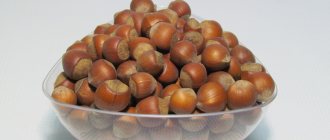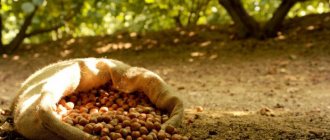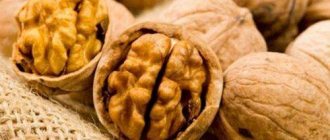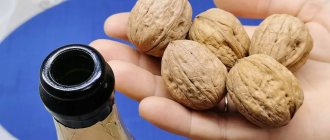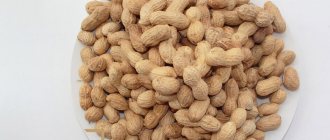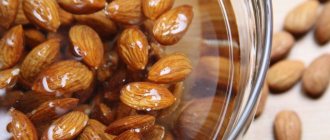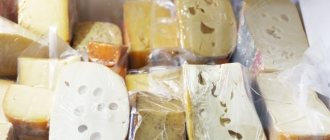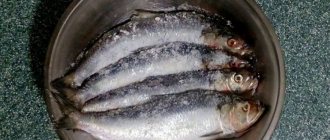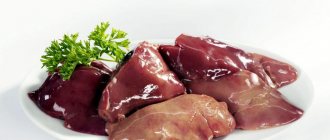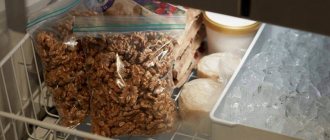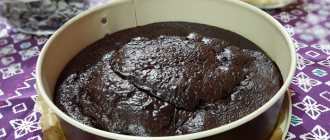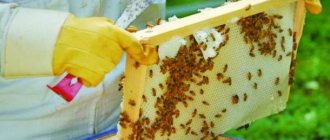How to store pine nuts correctly
Depending on the type of processing, raw materials are stored differently. Each method has its own characteristics.
Important! Exposure of peeled kernels to sunlight provokes the formation of mold, so the product should be stored in opaque packaging.
Methods for storing pine nuts
Peeled pine nuts are stored for a long time in the freezer and refrigerator compartment. The kernels are poured into dry glass containers. The container is hermetically sealed to prevent the product from absorbing odors. Leave in the refrigerator.
The most convenient way to store shelled pine nuts in the freezer is in vacuum packaging. Freezer bags also work. The buds are left in a room with good air access in canvas bags.
Where to store in shell:
- in the refrigerator compartment;
- in a bag with a special air membrane;
- in a canvas bag.
In the freezer, you can keep the product in a plastic container or wrapped in foil.
Storage conditions
The shelf life of pine nuts depends on compliance with storage rules and on how they are stored - whether they are stored in cones, shells or peeled. Following the rules will allow you to enjoy the forest aroma of the fruit for a longer time. Properly selected, sorted raw materials must be thoroughly dried for 2 - 3 days. Exclude sun rays and artificial light! Nutrients are lost. Product preservation will be ensured by coolness, darkness, and dryness.
It is important to remember that grains easily absorb odors. The container must be tightly closed. Temperature changes are dangerous, good ventilation will not hurt
Where and how to store pine cones
Cones take up a lot of space, so the chosen method is not convenient for everyone. The seeds quickly lose their beneficial and tasteful qualities. First, the product is carefully checked. The cone must be fresh, without damage or rot. Contaminants are removed from the surface. Store in a dark place with good ventilation. Maintain temperature regime + 6-10 °C.
Rodents love to eat fragrant cones. Therefore, they are packaged in fabric bags and hung from the ceiling. If the storage area is humid, fungus will form on the surface.
The workpieces are inspected periodically. If there is a white coating, an unpleasant odor or insects, then the cones are thrown away. Spoiled raw materials will cause harm to the body.
Important! Crumpled and damaged cones cannot be stored.
Cones are stored in the refrigerator compartment for six months
How to prepare pine cones and nuts for storage
Pine nuts are the seeds of the pine pine tree. They are located in cones and covered with a dense shell.
When purchasing pine cones, you need to pay attention to the following factors:
- color - should be a rich brown shade, without spots;
- size - ripe fruits are 5–7 cm long.
When to prepare
Fruits must be prepared for winter storage immediately after harvesting. In September you need to carefully pick them from the tree and place them in boxes. Specimens that have fallen to the ground are not suitable for storage. During the impact, the seeds spill out.
Find out more about how to cook pine cones at home.
If you collect or buy green cones, you can ripen them at home. To do this, you need to place them in a warm and dry room, covering them with a small amount of straw or hay. Preparation consists of drying the collected material. To do this, the fruits are wrapped in paper and placed in a dry place. Can be placed in a boiler room (if you live in a private house) or under a battery.
Storage conditions
It is necessary to preserve fruits at home under the following conditions:
- Temperature. The room must be maintained at a constant temperature within the range of +15 to +20°C. If products are stored or dried in the open sun, the shelf life will be reduced.
- The optimal humidity level is 70%. Exceeding the permissible norm contributes to the development of mold.
- Protection from direct sunlight.
- Good ventilation. This helps prevent the development of fungal infections.
Important! Pine nuts begin to deteriorate when exposed to high humidity, heat and sunlight. The first signs of unsuitability for consumption are a pungent odor and the appearance of dark spots.
How to store pine nuts in shell at home
It is important to choose a technology for storing pine nuts. The raw materials will not change their properties in a cool room at a temperature of + 6-10 ° C. Significant variations will reduce shelf life.
The maximum permissible humidity level is 70%. If the value is higher, the product will become moldy. You can store:
- in plastic bags equipped with a gas-permeable membrane;
- in a jar with a tightly closed lid.
Choose a well-ventilated room.
The shell should be dense, without signs of damage
Storage periods and methods
The longest shelf life is for nuts extracted from cones rather than shelled . Left without a shell, the grains absorb foreign odors, and the fatty substances contained in them oxidize, giving the product bitterness.
Deadlines
If storage conditions are observed (cool and lack of moisture), the unrefined product will last for at least six months without loss of taste . Purified – no more than two months.
Advice. Buy the amount of grains that will be eaten in a short period of time. In an apartment it is not always possible to provide the product with proper storage conditions.
If peeled grains are purchased in a package, then place it in a dark place before opening the package . The production and expiration dates of such a product are indicated by the manufacturer. After opening the package, transfer the contents to a suitable light-proof container and store in a cool place.
Compliance with these rules will allow you to extend the shelf life of pine seeds.:
- constant temperature at the storage location no higher than +20°C without sudden changes;
- air humidity is no more than 65% - with high humidity, mold quickly appears;
- Unshelled nuts are dried before storage;
- peeled ones are stored in containers with tightly closed lids, away from sunlight and heat sources.
Where and how to store shelled pine nuts
To increase shelf life, the product is sorted, removing spoiled specimens. You can store shelled pine nuts:
- in an airtight bag;
- in a glass container;
- under vacuum in a plastic bag.
Choose a place that is dry, dark and ventilated.
Only dense, light-colored specimens with a pleasant aroma are suitable for storage.
How much is it for shelled and peeled nuts of different types, how long can they be stored?
Gretsky
- In a shell. Shelf life is 1 year, at a temperature of -15…+20 ºС. Canvas bags and wooden boxes are suitable for storage.
- Purified. The shelf life in the refrigerator is six months, in the freezer – up to 1 year.
Cedar
- In a shell. Shelf life – 6 months, at a temperature not exceeding +18 ºС.
- Purified. 2-3 weeks in the refrigerator, 6-8 months in the freezer.
Pine nuts contain a lot of fat – up to 65%. Shelf life from without shell and at room temperature is 1 week.
Hazelnut
- In a shell. Shelf life: 1 year, at +3…+12 ºС. Will increase to 4 years at a temperature of 0…+3 ºС.
- Purified. 3 months and six months in the refrigerator and freezer, respectively.
Peanut
In a shell. Shelf life: 1 year, at a temperature not exceeding +18 ºС
Important! Peanuts with intact shells can be stored for up to 10 years (!) at a temperature of -13 ºС.
Purified. Shelf life of nuts with husks is 4-6 months in the refrigerator
Peanuts absorb moisture well. Take it out of the refrigerator a little at a time and use it immediately to avoid condensation.
Almond
- In a shell. Up to 1 year, at a temperature not higher than +18ºС.
- Purified. Storage duration: in the refrigerator up to 6 months, in the freezer up to 2 years.
Almonds quickly absorb foreign odors. Provide airtight storage containers.
Cashew
- In a shell. Cashews are sold only in peeled form. Under their shells there is a toxic substance that causes burns.
- Purified. 5-6 months in the refrigerator.
Macadamia
- In a shell. Shelf life at temperatures 0…+10 ºС – 2 years.
- Cleaned. Without shells, nuts can be stored in the refrigerator for 1-2 months.
Do not store nuts in plastic bags. They “steal” in them and quickly deteriorate.
How long do pine nuts last?
The product in the shell retains its nutritional qualities for six months. During the same period, the taste will not deteriorate in the refrigerator or freezer. The shelf life of shelled pine nuts is 10-12 months.
If heat, sun and moisture are constantly exposed, the product will deteriorate before the specified date. When stored open in the refrigerator, raw materials will quickly lose their taste as they absorb the aroma of nearby products.
Even if after completion of the specified period the kernels retain their appearance, then they should not be consumed. The raw materials lose their beneficial properties, and the taste loses its richness. Bacteria also form on the surface, invisible to the human eye. Adding expired products to dishes leads to indigestion.
To increase shelf life and preserve a pleasant aroma, follow the following rules:
- You cannot purchase purified raw materials by weight, since prolonged exposure to air kills the beneficial qualities.
- A dry surface means the kernels are expired.
- Drying can only be done in an electric dryer.
- Roasted nuts should not be stored.
The taiga delicacy is collected in the fall, so you should not purchase the product in late spring and summer.
A fabric bag is ideal for storage
Effect of humidity and temperature on shelf life
The short shelf life is associated with the increased hygroscopicity of nuts - they absorb moisture from the environment, which negatively affects the taste and beneficial properties of the product.
No less harmful are light from the sun, air and elevated temperatures, which contribute to rapid spoilage of the product and loss of nutritional value of the crop. The best storage option is a dark room with a low temperature.
Read more ► Shelf life of coffee: instant, ground and beans
Why pine nuts are bitter and what to do
When consuming bitter kernels, the stomach intensively produces bile. This can cause pain and nausea. An unpleasant taste forms in the mouth, which lasts up to 14 days.
The main cause of bitterness is oxidation. At the molecular level, a double bond occurs between carbon atoms. When interacting with air flow, the kernels oxidize and become bitter. The change only applies to shelled nuts.
To get rid of an unpleasant taste, you can:
- After the water has boiled, cook for two minutes, then fry at high speed or bake in the oven.
- Pour boiling water over, hold for five minutes, then simmer in a frying pan for ten minutes.
Important! High temperature will help remove the bitter taste and protect the body from poisoning.
Preserving the beneficial properties of pine nuts
The nutritional value and taste of Siberian pine seeds can be preserved if the following conditions are met:
- It is better to store nuts from the September harvest;
- fruits that have been thoroughly dried for several days must be placed in dry packaging - containers, sterilized jars;
- Seeds must be stored in the dark - refrigerator, freezer, cool room;
- for freezing, the kernels are placed in foil, bags, jars - without access to air;
- It is periodically required to check cedar fruits for smell, taste, presence of insects, appearance (mold, plaque);
- It is better to store the seeds in the shell (this way they last longer).
Peeled seeds mixed with various ingredients (sugar, syrup) cannot be stored for a long time; it is better to eat them immediately.
Siberian cedar nuts with an unpleasant aroma, bloom, and bitter taste should not be eaten. You should not buy large quantities of Siberian cedar seeds for future use, since they have a short shelf life.
Selection of pine nuts for storage
Pine nuts are best consumed in small portions. This will also be good for health (the valuable properties of pine nuts are absorbed by the human body by 99%), and will not force you to think about long-term storage of large volumes. The choice of nuts for eating has some peculiarities - the nut should not be excessively dry, sprinkled with powder (stabilizer) or left for a long time in a bright room.
If pine nuts are consumed if storage conditions are not met, the taste sensation in the mouth may change - any food eaten or drunk after the nuts will seem bitter.
When there is a need to preserve a large number of nuts, it is worth paying attention to the raw materials - what is important is what all the components look like - cones, shells, pine nut kernels. The origin of the product also plays a role - nuts from the Siberian taiga are better preserved. Chinese nuts should be treated more carefully - modified or spoiled samples are often found among them.
The ripening season for pine nuts is September-October, at which time the cones themselves fall from the trees to the ground. By starting storage at this time, you can be sure of the freshness of the original product.
